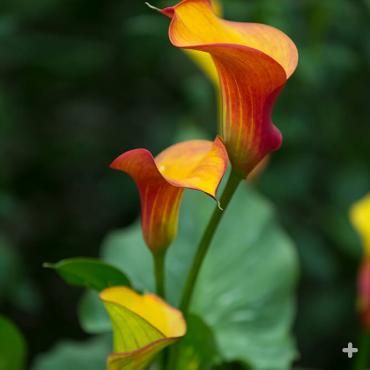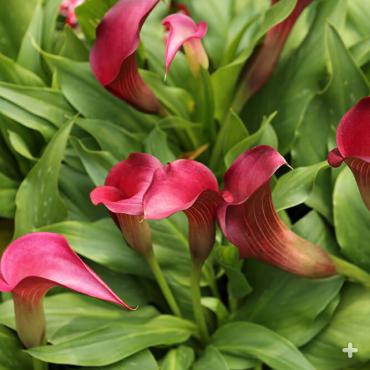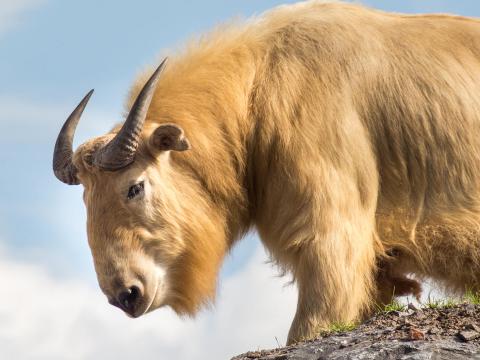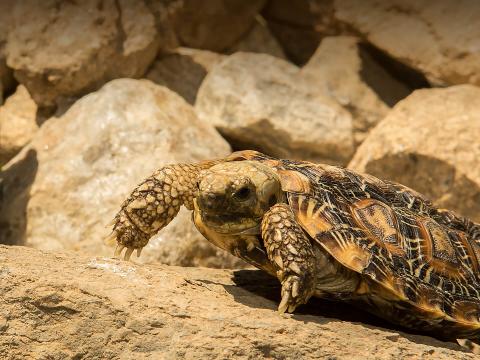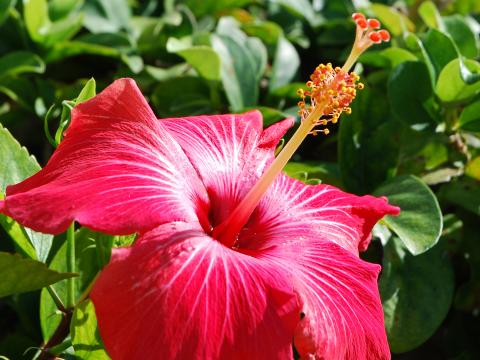Calla Lily
- DIVISION: Tracheophyta
- CLASS: Liliopsida
- ORDER: Arales
- FAMILY: Araceae
- GENUS: Zantedeschia
- SPECIES: aethiopica
OVERVIEW
When is a lily not a lily? When it's a calla lily Zantedeschia aethiopica, for one! Many flowers are called lilies, but only plants of the Liliacea family are the real thing. The lovely calla lily (say that three times fast!) is a member of the arum (jack-in-the pulpit) family. See for yourself: lilies usually have six separate petals, but the calla lily gives itself away with its single, white, petal-like spathe. It turns back to reveal the central yellow spadix that holds this plant's true flowers. Found in marshy areas of South Africa, the calla lilly may be a pretender, but those large, velvety white trumpets are too pretty to question!
CHARACTERISTICS
Take a close look at a clump of calla lilies, and you'll see large, arrow-shaped leaves growing on stalks—but not a stem in sight. That's because this plant grows a special kind of underground stem called a rhizome. Leaves, roots, and bracts—specialized leaves that surround the flowers—grow directly from a calla lily's thick, fleshy rhizome. A calla lily's characteristic creamy white, trumpet-shaped bracts are called spathes. Each spathe supports and protects a single yellow, 3-inch (7.6-centimeter) fingerlike spike covered with tiny flowers. Male flowers—which produce a plethora of pollen—grow on the top part of the spike, and female flowers grow lower, near the bottom.
CULTIVATION
Popular in gardens, in containers, and in floral arrangements, calla lilies grow in clumps that get to be about three feet tall and two feet wide. They grow best in partial shade or full sun in rich, moist soil. Calla lilies would be a good choice for a rain garden or for bordering a pond. In fact, they can grow in standing water! Although they are perennial herbs, they die back in response to dry conditions or cold weather. If your garden gets below about 20 degrees Fahrenheit (-6.7 degrees Celsius) in the winter, you'll want to bring the plants inside until spring. You can dig up your calla lilies and divide the rhizomes to get more plants. Various cultivars and related species grow spathes that are green, yellow, pink, or maroon.



